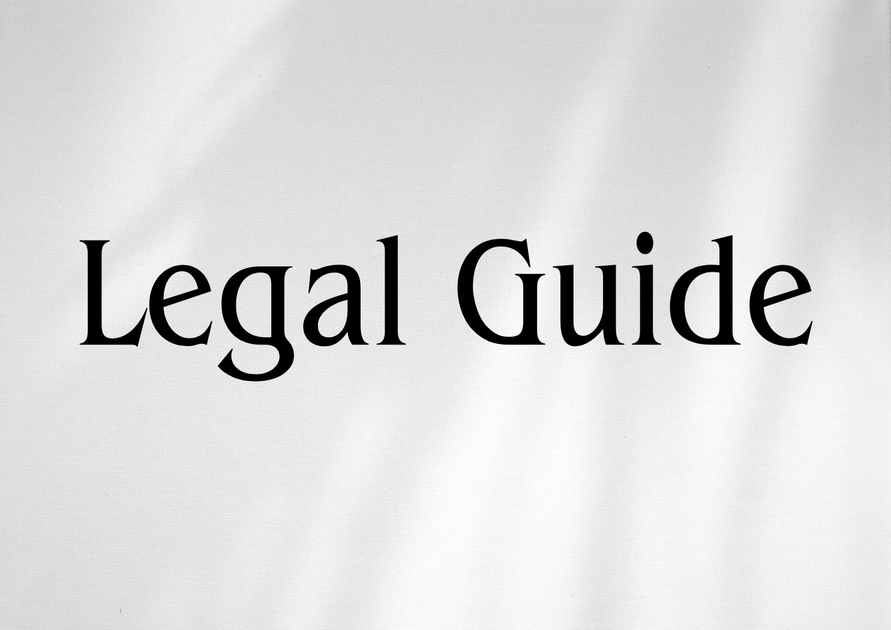Introduction: Understanding Airport Construction Laws for UAE Stakeholders
As Saudi Arabia continues rapid expansion of its aviation infrastructure under Vision 2030, legal frameworks governing airport construction and expansion have evolved to meet complex challenges posed by international investment, cross-border compliance, and sustainability requirements. For UAE-based investors, contractors, and service providers engaged in, or considering, opportunities within the Kingdom’s aviation sector, a profound understanding of the relevant Saudi legal environment is imperative. This advisory analyses the latest legislative updates—particularly in light of regional harmonization efforts—and offers practical consultancy insights for compliance, risk mitigation, and strategic decision-making.
Given the Kingdom’s central geographic location and growing regional influence, changes to airport construction and expansion laws have a direct bearing on UAE legal compliance, especially for entities engaged in joint ventures, public-private partnerships (PPPs), and cross-jurisdictional procurement. Recent legislative updates underpin the importance of robust due diligence and adherence to Saudi regulations, whilst ensuring alignment with UAE legal obligations, such as anti-corruption (as per Federal Decree Law No. 31 of 2021) and sustainable development mandates. This article provides essential guidance for executives, legal professionals, and compliance officers navigating this dynamic regulatory landscape.
Table of Contents
- Overview of Saudi Airport Construction Legal Framework
- Governing Authorities and Regulatory Structure
- Key Statutes, Decrees, and Updates in 2024–2025
- Licensing, Permits, and Project Approvals
- Environmental, Safety, and Sustainability Compliance
- Procurement, PPPs, and Foreign Investment: Legal Requirements
- Compliance Risks and Practical Strategies for UAE Entities
- Case Studies: Real-World Legal Challenges and Outcomes
- Comparative Table: Legacy vs Revised Legislation
- Actionable Recommendations and Best Practices
- Conclusion: Shaping the Region’s Aviation Future
Overview of Saudi Airport Construction Legal Framework
Saudi Arabia’s airport development space is governed by a complex matrix of national legislation, executive regulations, ministerial decisions, and internationally-influenced technical standards. The legal landscape is shaped by:
- Royal Decrees issued by the Custodian of the Two Holy Mosques
- Implementing Regulations from relevant Ministries
- Directives from the General Authority of Civil Aviation (GACA)
- Guidelines inspired by the Kingdom’s Vision 2030 agenda
This multi-level regulatory architecture aims to ensure aviation infrastructure is aligned with international best practices, investor protection, advanced safety standards, and sustainable growth objectives. For UAE enterprises and legal practitioners, understanding both statutory instruments and regulatory policies is critical to successful project delivery.
Governing Authorities and Regulatory Structure
General Authority of Civil Aviation (GACA)
GACA is the principal regulator overseeing airport construction, certification, and ongoing compliance (referencing the GACA Law promulgated by Royal Decree No. M/44, 2005, as updated). GACA establishes permitting protocols, issues technical standards, supervises operational phases, and enforces sanctions for non-compliance.
Ministry of Transport and Logistic Services
Responsible for strategic planning and liaising with other ministries—such as the Ministry of Municipal, Rural Affairs and Housing—to ensure infrastructure harmony with urban development statutes. Key instruments include the Ministry of Transport Regulations and sectoral directives aligned to Vision 2030.
Other Influential Authorities
- Ministry of Interior (for security compliance)
- National Center for Environmental Compliance
- Saudi Arabian General Investment Authority (SAGIA) for foreign investment pre-approvals
- Public Investment Fund (PIF) for PPP/privatization initiatives
Key Statutes, Decrees, and Updates in 2024–2025
The legal framework for airport construction in Saudi Arabia is underpinned by several primary statutes and recent updates, including:
- The GACA Law (Royal Decree No. M/44 2005, as amended)
Outlines GACA’s powers to issue construction permits, enforce technical and safety standards, and approve expansion plans. - Civil Aviation Law (Royal Decree No. M/44 2024 Revision)
Establishes key planning, environmental, security, and operational requirements for airports. The 2024 revision aligns procedures with ICAO and IATA guidelines and introduces updated penalty structures. - Executive Regulations on Airport Construction (2024 GACA Executive Directive)
Prescribes licensing procedures, project submission requirements, environmental assessment criteria, stakeholder consultation mandates, and phased approval protocols. - PPP and Investment Law (Royal Decree No. M/63 2021, updated 2024)
Sets out new rules for private and cross-border investment in airport infrastructure, risk-sharing, and dispute resolution procedures.
These statutes are complemented by sectoral regulations on procurement, employment, building safety, and tendering, and are periodically amended to incorporate international standards and policy priorities.
Licensing, Permits, and Project Approvals
Licensing Roadmap for Airport Construction
Any party seeking to construct or expand airport infrastructure in Saudi Arabia must obtain sequential licenses from GACA and associated authorities. The typical licensing process entails:
- Preliminary Feasibility Clearance: Submit project profile, including proof of technical and financial capacity, for initial screening.
- Environmental Impact Assessment (EIA): Comprehensive study prepared by registered consultants, subject to public consultation (per the National Center for Environmental Compliance guidelines).
- Main Construction Permit: Full design review, technical document submission, safety strategy, and stakeholder engagement report.
- Building and Utility Interface Permissions: Obtained from local municipalities and utility service providers, coordinated via the Ministry of Municipal, Rural Affairs and Housing.
- Operational Certification: Awarded following site inspection, compliance audit, and safety demonstration phases.
| Phase | Responsible Authority | Key UAE Legal Consideration |
|---|---|---|
| Feasibility/Pre-Approval | GACA, SAGIA | Review JV terms for cross-jurisdictional compliance |
| EIA & Consultation | National Center for Environmental Compliance | Ensure environmental due diligence aligns with UAE Federal Law No. 24 of 1999 (for UAE-based entities) |
| Main Permit | GACA | Conformity to GCC and international standards, including UAE tendering requirements |
| Municipal Interface | Local Municipalities | Coordination for cross-border asset ownership, labor deployment compliance |
| Operational Certificate | GACA | Safety, insurance compliance; alignment with UAE aviation insurance mandates |
Consultancy Insight: Proactive Stakeholder Engagement
Regulators in Saudi Arabia increasingly expect demonstrable stakeholder engagement—including consultation with local communities, airlines, and environmental bodies—prior to permit grant. UAE entities must anticipate these expanded requirements, incorporating lessons from Federal Decree Law No. 33 of 2021 (UAE Labour Law), which mandates broad stakeholder consultation for major infrastructure projects.
Environmental, Safety, and Sustainability Compliance
Mandatory Environmental Approvals
Saudi law mandates a formal Environmental Impact Assessment (EIA) in conformity with the National Center for Environmental Compliance directives and international benchmarks (e.g., ICAO Doc 9184). Recent GACA Executive Directives require EIAs to be publicized, with stakeholder comments integrated into the approval process. This mirrors the UAE’s own obligations under the Federal Law No. 24 of 1999 for Environmental Protection.
- Failure to obtain a valid EIA approval can result in project suspension and significant financial penalties under the updated Civil Aviation Law.
- Institutional investors and PPP partners increasingly demand environmental compliance as a condition precedent to investment or financing agreements.
Safety Standards and Certification
All design and construction activities must comply with GACA technical guides, ICAO Annex 14 standards, and updated fire/life safety codes. Notably, the amended 2024 Civil Aviation Regulations introduce tiered inspection for multi-phase projects, mirroring UAE General Civil Aviation Authority (GCAA) best practices. Certificates of Compliance are prerequisites for commissioning and are subject to regular audits and renewal every five years.
Sustainability and Green Airport Mandates
In line with Vision 2030, Saudi regulations now incentivize sustainable airport design through fast-tracked approvals and, in certain cases, tax benefits. Initiatives include solar arrays, rainwater harvesting, energy-efficient terminal design, and bio-based construction materials. UAE and international investors must anticipate these preferences and embed ESG (Environmental, Social, and Governance) benchmarks in project proposals.
Procurement, PPPs, and Foreign Investment: Legal Requirements
Public-Private Partnerships (PPP) and Concession Models
The updated PPP Law (Royal Decree No. M/63 2021, 2024 amendments) governs private sector participation, including PPP, BOOT (Build-Own-Operate-Transfer), and concession arrangements for airport construction and expansion. Key legal requirements include:
- Mandatory risk-sharing and step-in rights clauses in concession agreements
- Minimum investment thresholds for international investors (as updated by 2024 GACA guidance)
- Local content/saudization ratios and workforce localization policies
- Robust dispute resolution procedures, typically referencing Saudi administrative courts and, in some cases, international arbitration (as per ICC or UNCITRAL rules)
Notably, JV structures must comply with anti-bribery and anti-corruption due diligence under both Saudi law and UAE Federal Decree Law No. 31 of 2021, reinforcing the need for robust compliance programs.
Procurement and Tender Law Compliance
- Airport construction contracts are subject to the new Government Procurement Law (Royal Decree No. M/128 of 2019, plus implementing regulations of 2023–2024).
- All tenders must adhere to open, fair competition requirements and anti-collusion safeguards, closely monitored by the Oversight and Anti-Corruption Authority (Nazaha).
| Aspect | KSA Requirement | UAE Requirement |
|---|---|---|
| Procurement Law | Royal Decree No. M/128 of 2019 (2023/24 updated regs) | Federal Law No. 6 of 2021 (Procurement and Projects Law) |
| Anti-bribery Checks | Nazaha vetting; PPP special provisions | Federal Decree Law No. 31 of 2021 |
| Foreign Ownership | Per SAGIA/Ithraa guidelines | Per sectoral resolutions |
| Local Content | Saudization quotas, escalating in 2025 | Emiratization quotas for comparable projects |
Consultancy Insight: Pre-Tender Due Diligence
UAE legal consultants play a strategic role in reviewing PPP/concession contracts for compliance with both Saudi and UAE regulatory requirements, especially regarding anti-bribery, shareholding restrictions, and labor commitments. Early legal review is critical to avoid costly disqualifications or disputes.
Compliance Risks and Practical Strategies for UAE Entities
Key Legal Risks
- Permit or Tender Invalidity due to procedural non-compliance;
- Sanctions for Environmental Breaches (including blacklisting and financial penalties);
- Labour Law Breaches for non-compliance with Saudization or worker welfare standards;
- Corruption Investigations under both Nazaha (Saudi) and UAE oversight bodies.
Risk Mitigation and Compliance Checklist
- Engage local Saudi legal counsel early to interpret statute developments and regulatory updates;
- Align all permit applications with GACA’s latest protocols—monitor recent circulars and technical bulletins;
- Perform joint legal reviews with UAE compliance experts for JV and PPP project documentation;
- Adopt robust ESG due diligence to meet both Saudi and UAE sustainability requirements;
- Maintain documentary evidence of all stakeholder engagements and approvals.
| Offence | Penalty (KSA, 2024–2025) | UAE Equivalent |
|---|---|---|
| Operating without EIA | Up to SAR 2 million + halt orders | Project suspension (Federal Law No. 24 of 1999) |
| Breach of Saudization | SAR 500k per breach + blacklisting | AED 50k–200k (UAE Labour Law No. 33/2021) |
| Bribery/Corruption | Imprisonment, fines, public blacklisting | Criminal prosecution (Federal Decree Law No. 31/2021) |
Suggestion: Insert a process flow diagram illustrating the typical airport construction compliance workflow (from pre-approval to project commissioning).
Case Studies: Real-World Legal Challenges and Outcomes
Case Study 1: Joint Venture Disqualification
Scenario: A UAE-based builder partners with a Saudi firm to tender for a new terminal project. The JV did not incorporate mandatory anti-corruption controls required under Saudi PPP regulations.
Outcome: The entity was disqualified during GACA vetting. Subsequent Nazaha investigation recommended wider sectoral review, resulting in reputational harm to both partners. Lesson: Early, detailed compliance review—including alignment with UAE anti-bribery law—is essential.
Case Study 2: EIA Non-Compliance and Project Delay
Scenario: A multinational consortium fast-tracked an EIA, using a generic template and neglecting local stakeholder consultation.
Outcome: After citizen complaints, the National Center for Environmental Compliance rescinded the EIA approval, causing a 12-month delay and additional costs. Lesson: UAE teams must prioritize high-quality, localized EIA submissions and authentic stakeholder engagement to avoid similar setbacks.
Case Study 3: Successful Cross-Border Expansion
Scenario: A UAE airport operator was able to secure a major concession for an airport expansion, successfully navigating dual compliance requirements (GACA, UAE tender laws, and environmental standards).
Outcome: The project set regional benchmarks and was completed on schedule, resulting in new business opportunities. Lesson: Invest in specialist legal and environmental consultants for cross-jurisdictional projects.
Comparative Table: Legacy vs Revised Legislation
| Provision | Pre-2024 Law | 2024 Revision | UAE Equivalent |
|---|---|---|---|
| EIA Mandate | Internal review, no public input | Mandatory public consultation, stricter thresholds | Federal Law No. 24/1999 (UAE) |
| Anti-Corruption | Basic declarations | Nazaha vetting, detailed compliance programs | Federal Decree Law No. 31/2021 |
| PPP Framework | Unspecified, ad hoc requirements | Clear contractual models, risk allocation protocols | UAE Cabinet Resolutions on PPP |
| Sustainability/ESG | Optional green features | Priority approvals and tax incentives for ESG-compliant designs | UAE Green Economy Initiatives |
Actionable Recommendations and Best Practices
- Map Regulatory Landscape: Conduct a thorough regulatory mapping exercise—including statute, guidelines, and local decrees—covering both Saudi and UAE frameworks before bid submission or partnership formation.
- Stakeholder and Community Engagement: Proactively build relationships with local stakeholders and ensure their input is authentically reflected in all EIA documentation.
- Dual Compliance Programs: Implement integrated compliance manuals covering both Saudi and UAE obligations, particularly for bribery, labor, and ESG requirements.
- Regular Legal Training: Invest in upskilling project teams regarding new laws, audit procedures, and cross-border risk management.
- Leverage Specialist Consultants: Early engagement with both Saudi and UAE legal/environmental consultants ensures documentation and procurement punctuality and reduces compliance risk exposure.
Suggestion: Insert a compliance checklist infographic tailored for UAE-based airport construction teams operating in Saudi Arabia for maximum practical value.
Conclusion: Shaping the Region’s Aviation Future
The evolving landscape of airport construction and expansion laws in Saudi Arabia presents both opportunities and heightened responsibilities for UAE-based organizations. Legislative reforms emphasize sustainability, stakeholder engagement, and zero-tolerance for corruption, mirroring trends in the UAE legal environment. Forward-looking organizations will adopt holistic compliance strategies, leveraging cross-border legal expertise to pre-empt regulatory risks, safeguard reputation, and unlock long-term value.
As the Gulf aviation market integrates more fully, staying ahead of legal updates—whether under the auspices of the Saudi General Authority of Civil Aviation or UAE federal decrees—will prove decisive for organizations seeking to lead in this sector. We recommend regular legal review, ongoing regulatory monitoring, and strategic investment in compliance infrastructure to ensure projects are delivered smoothly, safely, and with full alignment to both Saudi and UAE legal frameworks.
For a tailored assessment of your organization’s compliance gaps or to discuss upcoming opportunities in aviation infrastructure, please contact our legal consultancy team for expert guidance.



